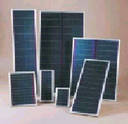Our last post discussed whether we would be a good candidate for solar power. This post is discussing estimating the costs for solar installations. From our previous post I think we concluded that we are probably good  candidates in the summer time, but winter time with snow on the roof it will be an entirely different matter. Never the less we need to figure out what the cost will be. Also how much energy will actually be generated to help pay for the cost of the solar panel installation. Solar Power Installations also depend on the size of the panels used.
candidates in the summer time, but winter time with snow on the roof it will be an entirely different matter. Never the less we need to figure out what the cost will be. Also how much energy will actually be generated to help pay for the cost of the solar panel installation. Solar Power Installations also depend on the size of the panels used.
Solar Power Installations – Roof Condition
One of the questions deals with the condition of our roof. It is in good shape and should last another 20 years. We just replaced the shingles 5 years ago and they are supposed to be 25 year shingles. Will they really last that long? Well for the purposes of this analysis, we are gong to assume that they will. Also that we will also have a payback period of less than 20 years. In other words the solar generation system will pay for itself in less than the 20 year time frame. Other wise I need to replace the roof and the solar panels before they have generated enough power to compensate for the cost of installation.
Another question was whether we would own the house or not. The answer is yes but we might sell it in another 10 years. We have to assume that having a solar system will enhance the value of the home. No one is sure how much, but lets assume that it will add something to it. We will figure out this number in our next post.
What is the cost of installing solar power installations?
Well without knowing any details other than the cost of the power we use and how much power we use, one site we found estimated that the cost of a system would be around $10,000 to generate 1800kw’s of power. This was a basic installation with a good roof and no real difficult issues to overcome. This did not include backup batteries for storing power, while energy is being produced and not needed by the home owner. Batteries will add to this cost in terms of purchase cost as well as maintenance costs.
Obviously each installation will be a bit different and will require a detailed estimate. Either way, I beginning to get sticker shock already at this price. This is before any rebates or incentives and any interest costs. If you are planning to go ahead with an installation of a solar system, it is vitally important that you investigate what incentives are available from various governments and also what permits you need. Both of these can have a significant impact on your final cost.
Calculating Your Net Cost and Your Payback Period
Net cost is the total cost of your solar power installation , less whatever incentives and savings you may or may not get from installing this system. If you get back more than you invest, then you are ahead of the game. the other factor is payback period. This is the time it takes you to recover all of your costs.
Many companies are looking for a year or less. However consumers will be satisfied with between 4 and 8 years depending on the product and it’s lifespan, as well as other factors which are specific to each family and installation. These might include moving plans, selling value, cash flow and how your home will look when it is covered in solar panels.
This is a much more complex decision than what I originally thought and it will take some more work and analysis before we can make a decision on solar panels for our home. I also want to speak with other consumers who may have installed this installation to see what comments they have. The cost of electricity is being raised every year so it is becoming more and more interesting to look for alternate sources of power.
In our next post we will build a table that is going to help us calculate the net cost and also the payback period. Watch for this post. It could mean the end of this blog for us if the payback is too long or the cost is too much! Your comments and thoughts are welcome.
For more thoughts and ideas about using solar power, click here.